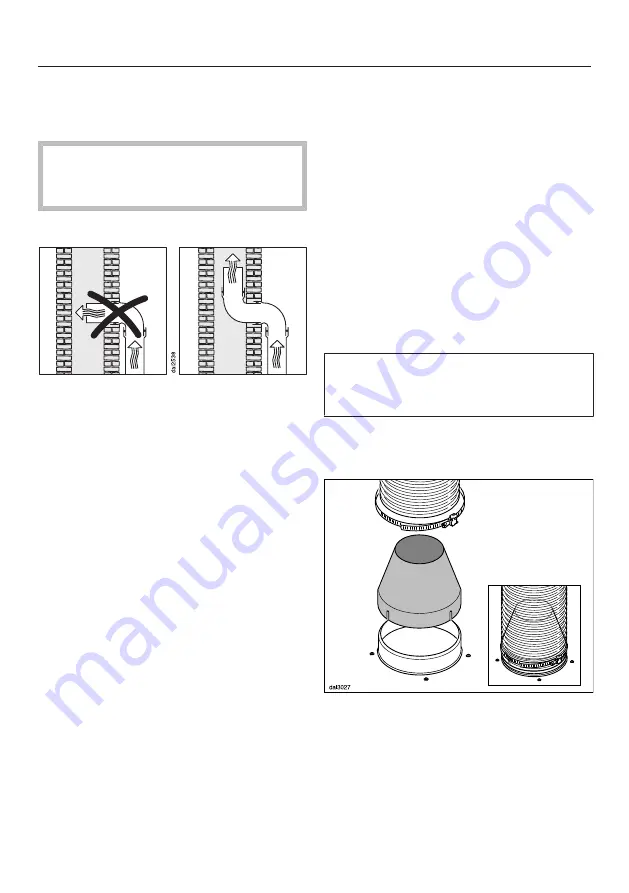
Installation
*INSTALLATION*
52
- If the ducting has flaps, these must
be opened whenever the ventilation
hood is switched on.
Any constriction of the air throughput
will reduce extraction performance
and increase operating noise.
Ventilation stack
If the exhaust air is to be ducted into a
flue, the ducting must be directed in the
flow direction of the flue.
If the flue is used by several ventilation
units, the cross-section of the flue must
be large enough.
Non-return flap
Use a non-return flap in the vent
system.
A non-return flap ensures that when the
ventilation hood is not in operation, the
duct is closed to prevent unwanted
exchange of room air and outside air.
If the exhaust is ducted through an
outside wall, a Miele wall vent or roof
vent (available as an optional
accessory) is recommended. Both of
these have a built-in non-return flap.
If the on-site vent system does not have
a non-return flap, you can purchase one
as an optional accessory.
Condensate
If the ducting is to run through cool
rooms or ceiling space, for example, the
significant variations in temperature
between the different areas can cause
condensate to form. Insulate the
ducting to reduce temperature
variations.
If the ducting is to be laid horizontally, it
must be laid with a downwards sloping
gradient of at least ³/₈" (1 cm) per meter.
This is to ensure that condensate
cannot drain back into the ventilation
hood.
Miele will not accept warranty claims
for any functional defects or damage
caused by inadequate ducting.
Reducing Collar
(optional accessory)
If you would like to reduce the
environmental impact of your ventilation
system by limiting the CFM output the
Reducing Collar can be installed. It
reduces the air flow to less than
400 CFM. Check local building codes
for max. CFM requirements.









































